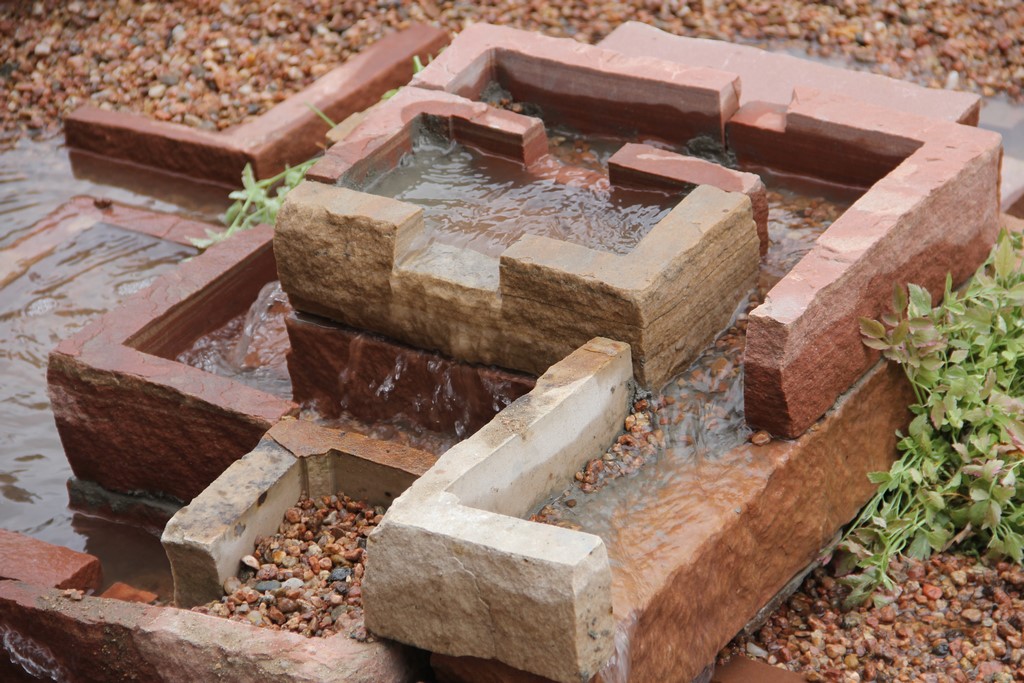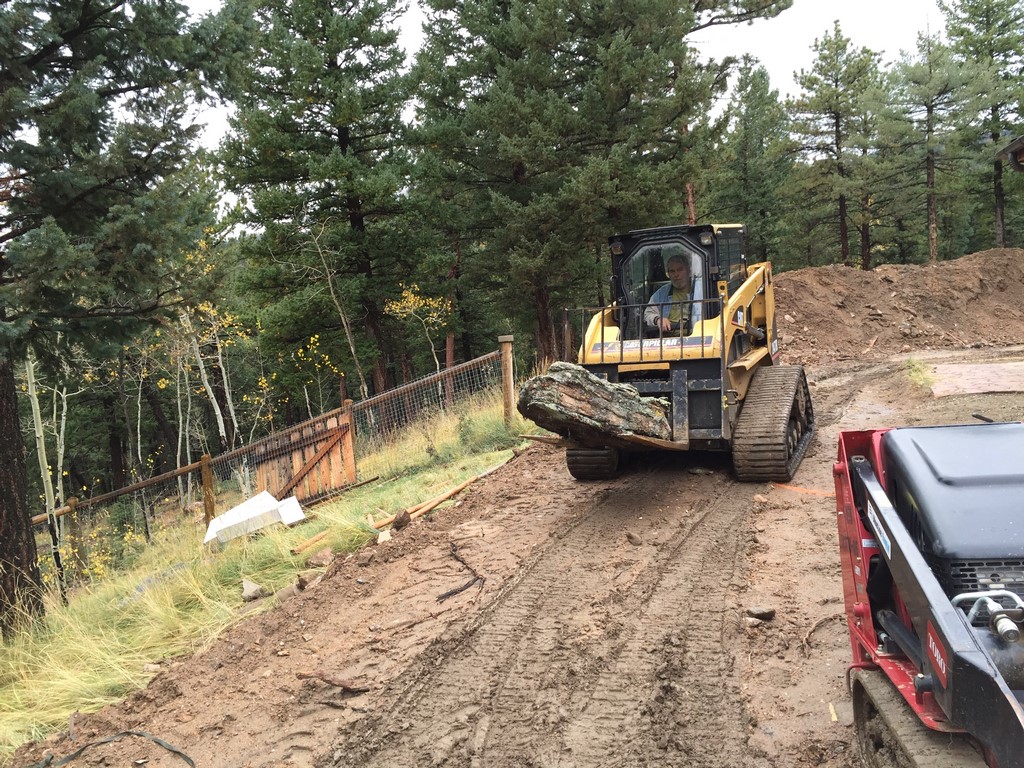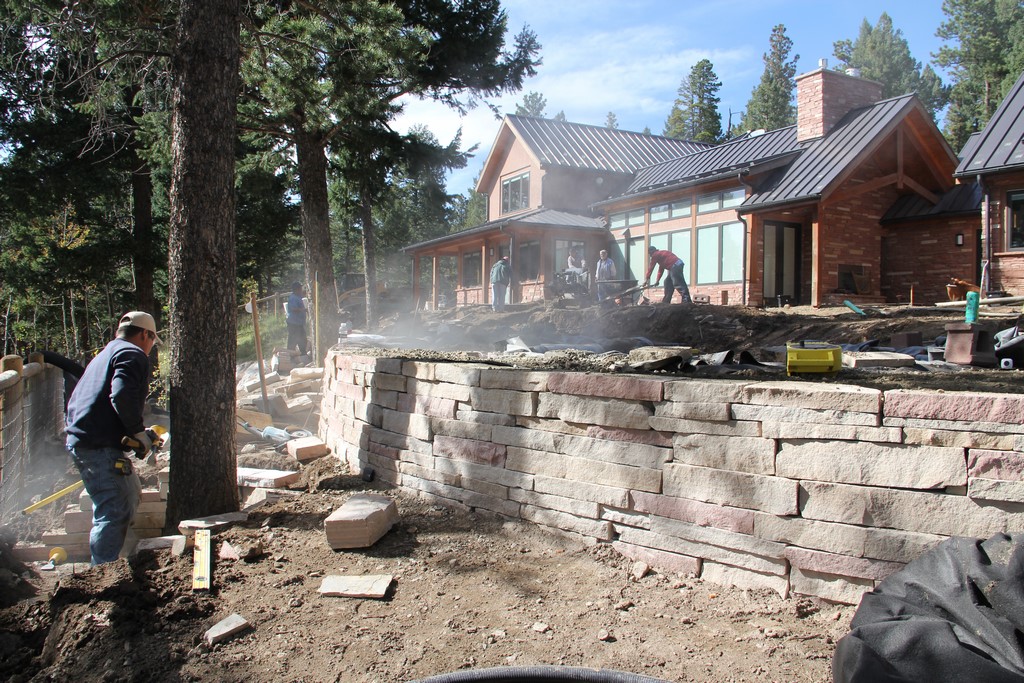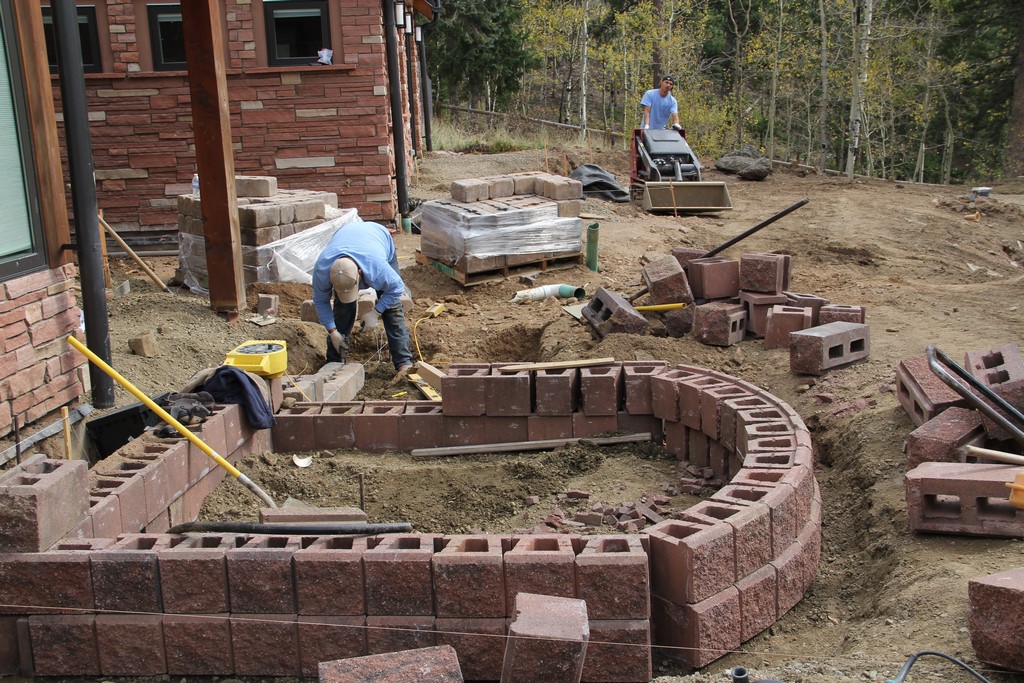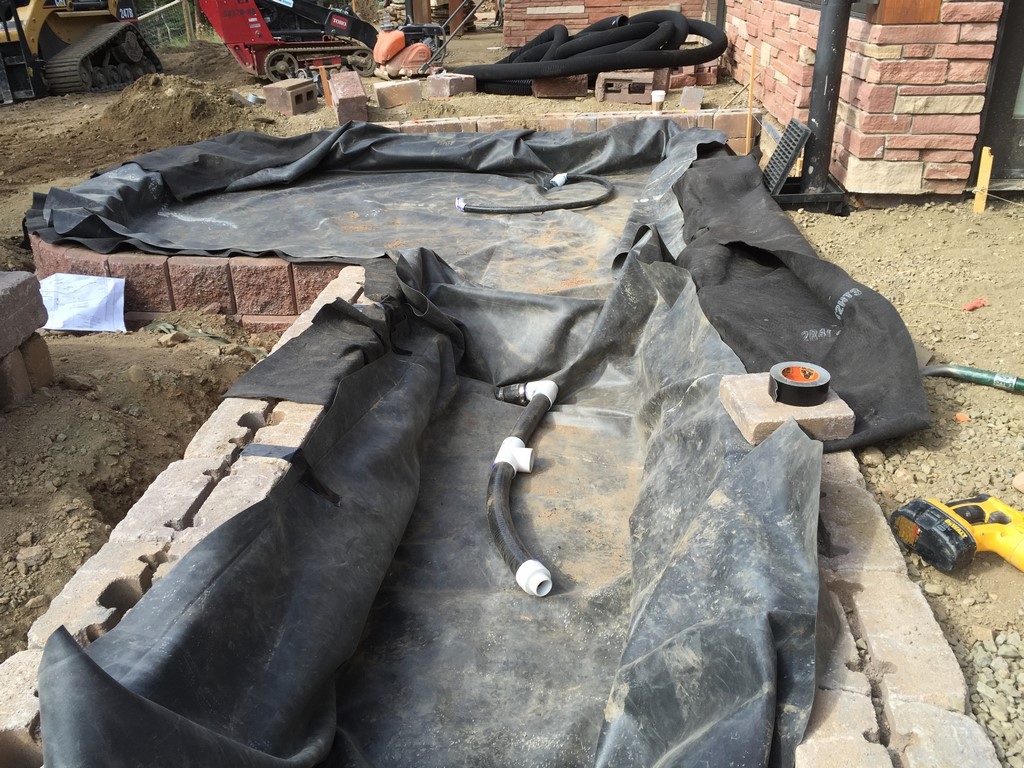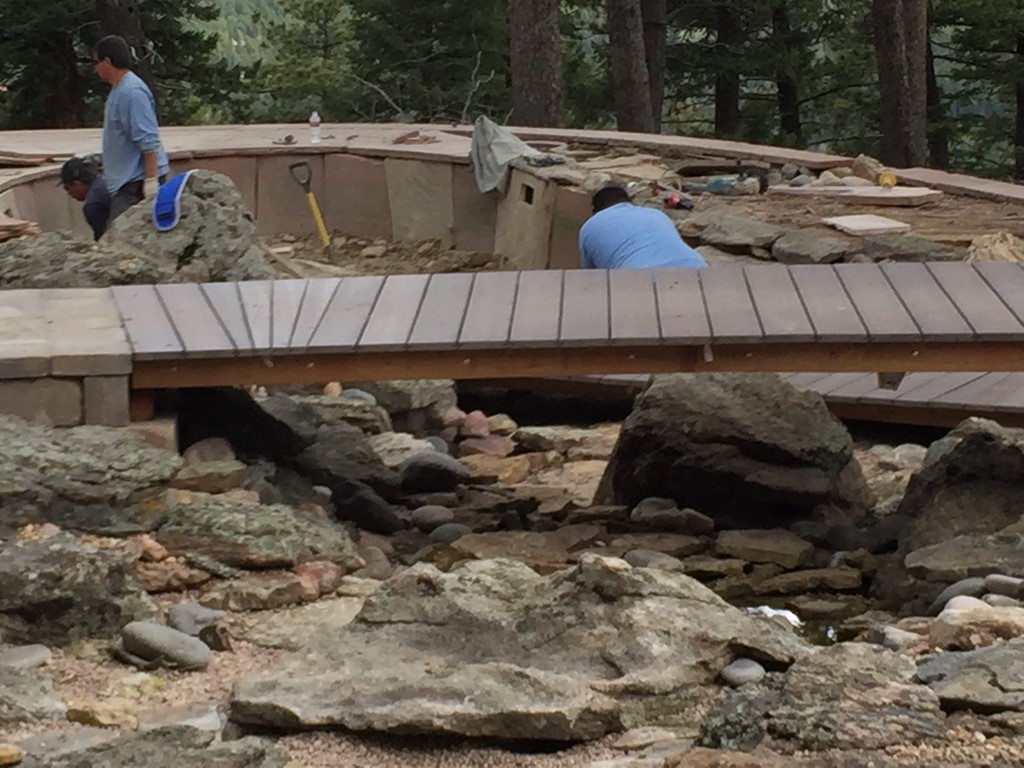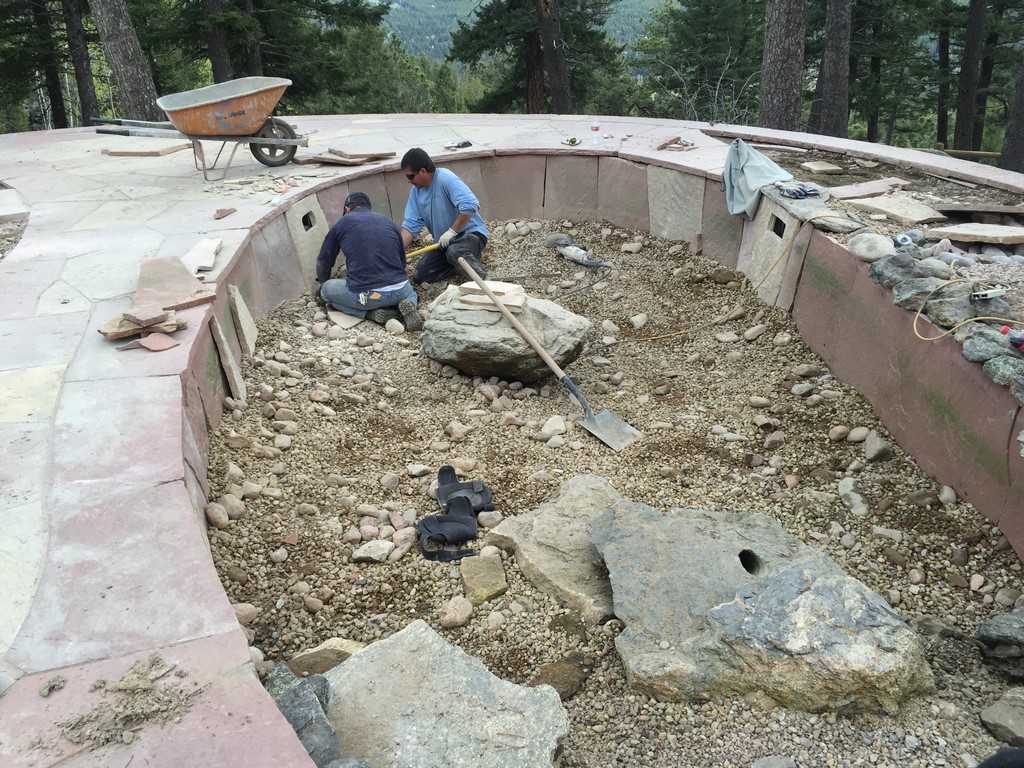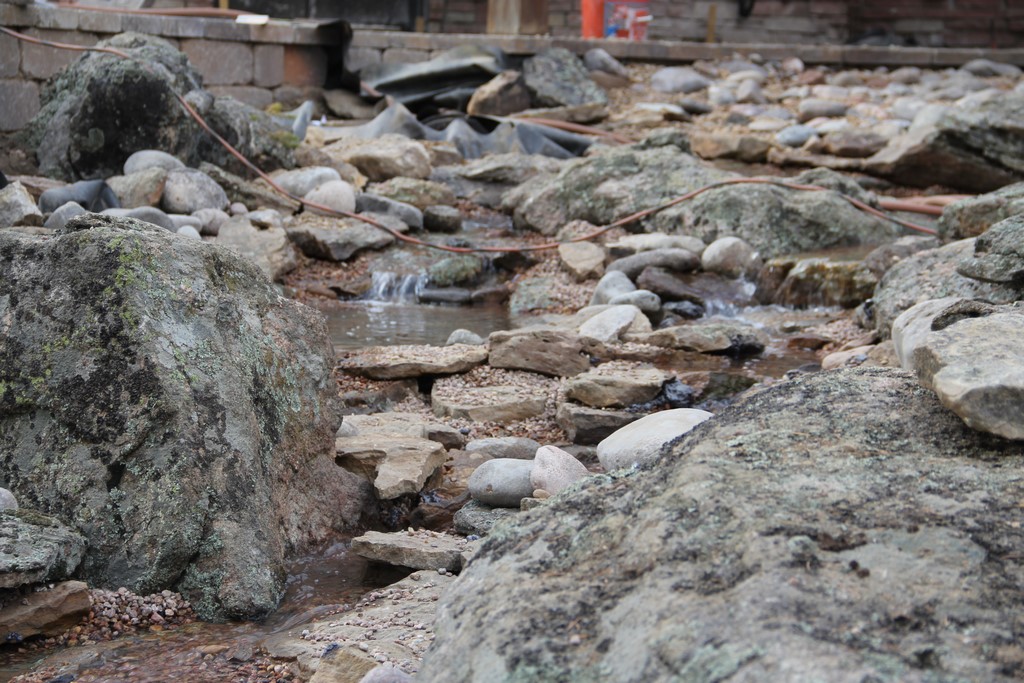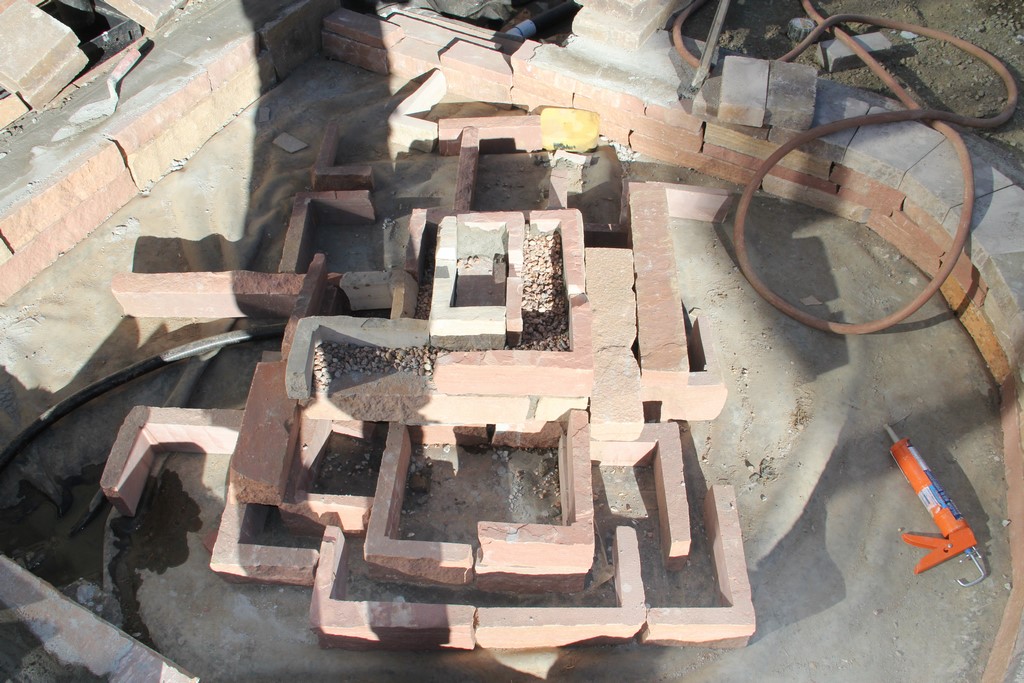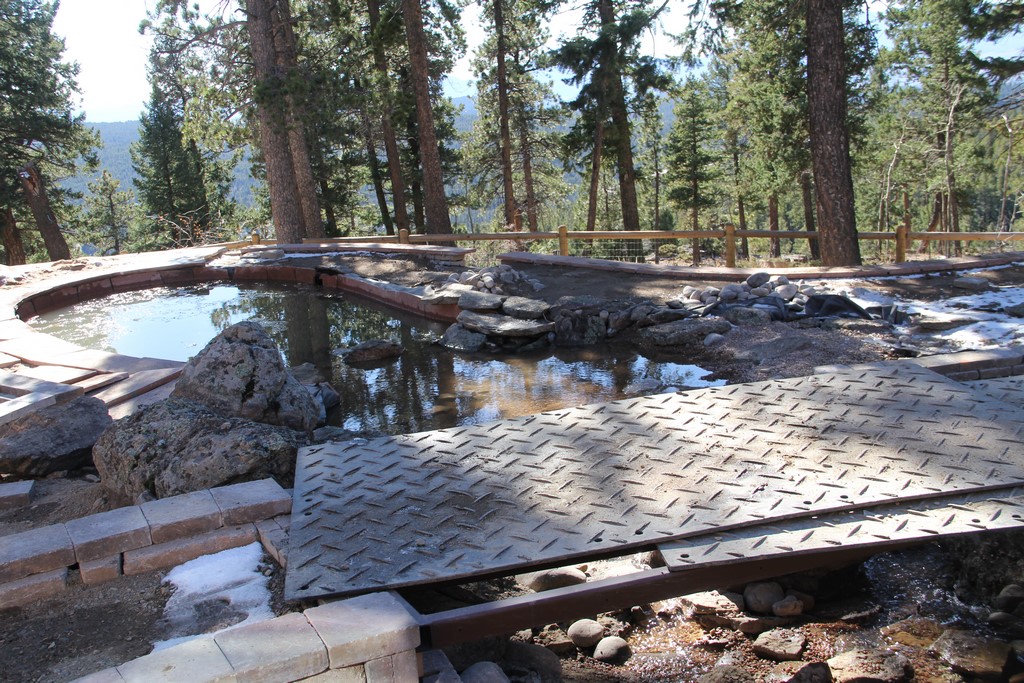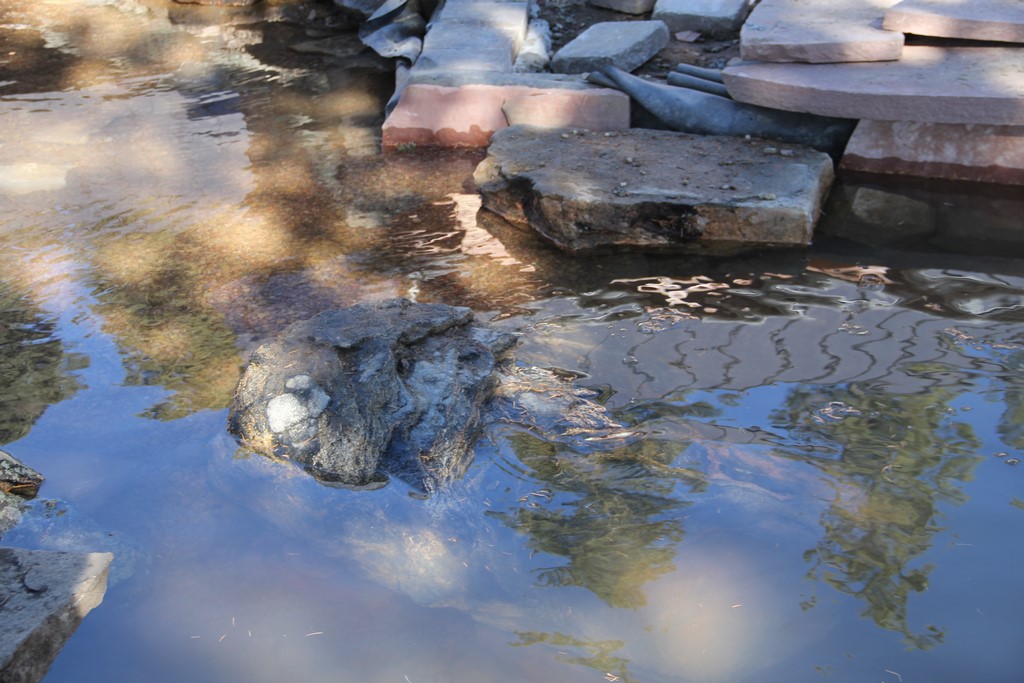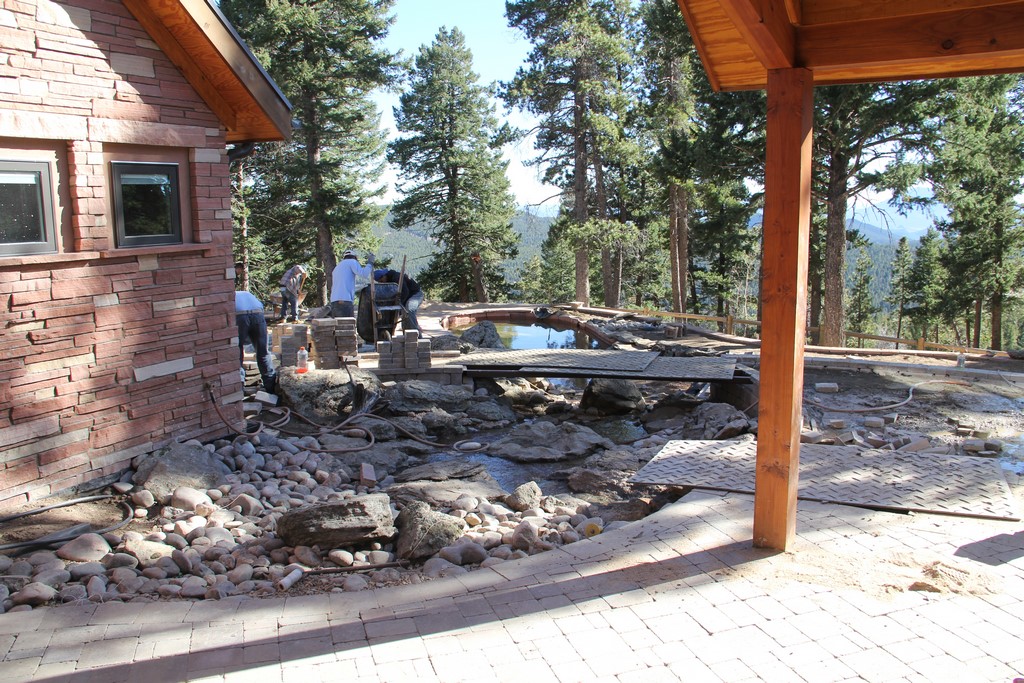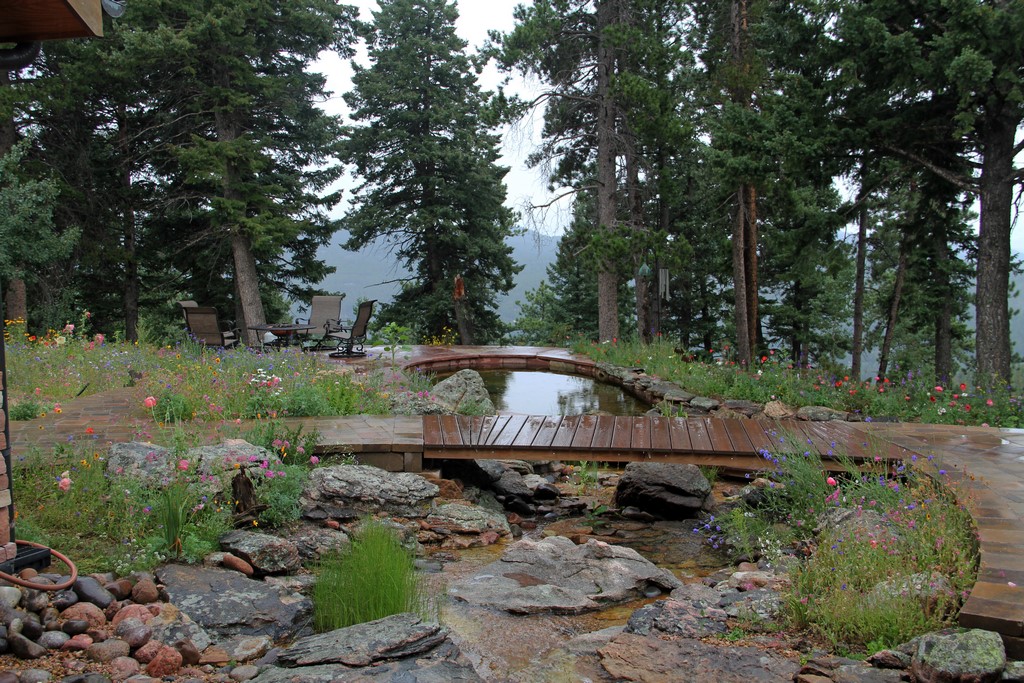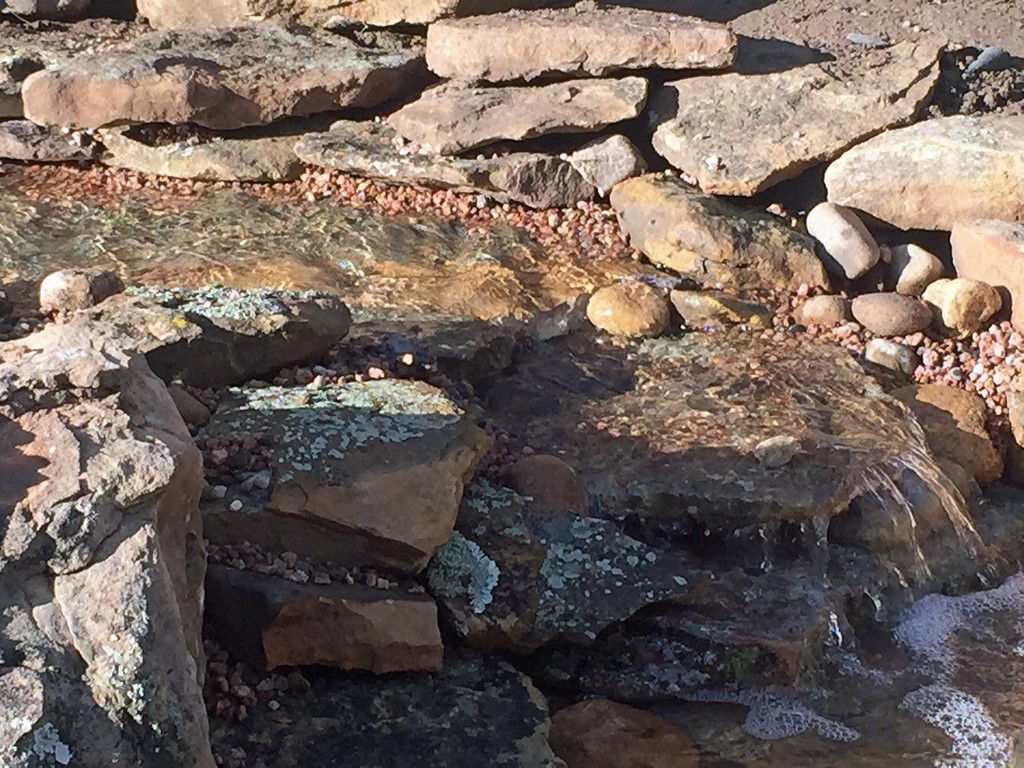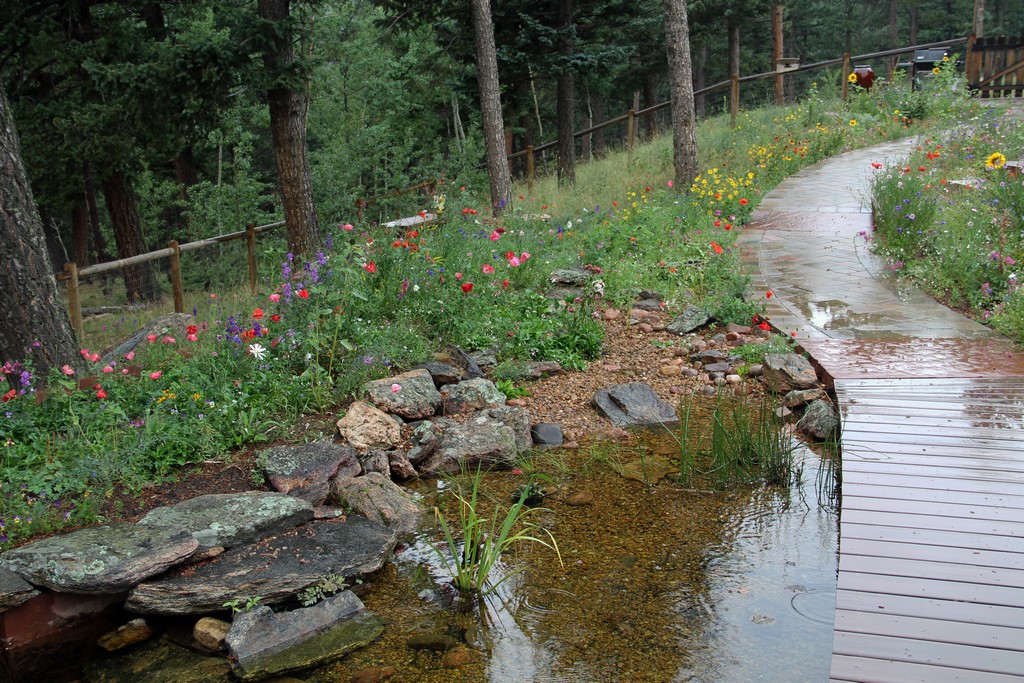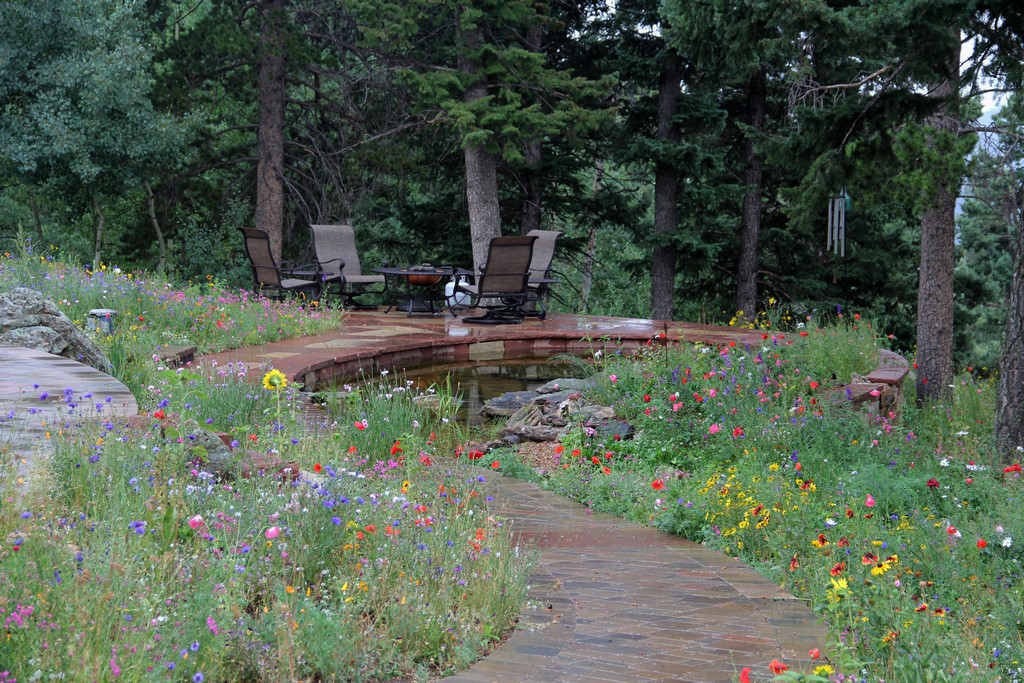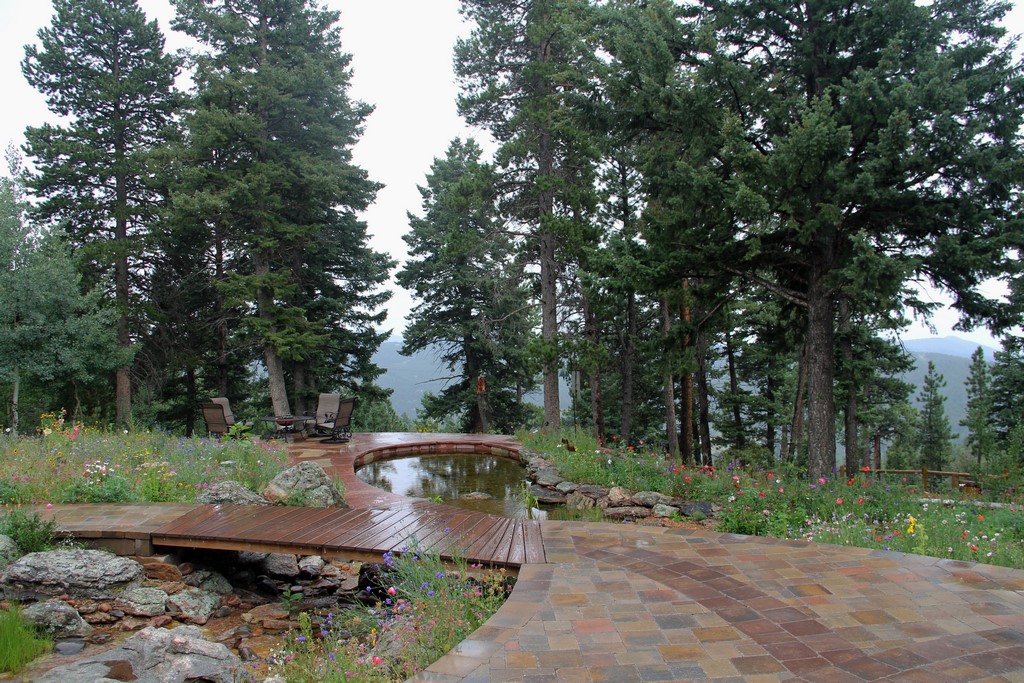Shared Vision

As I’ve gotten better at what I do as a watershaper, I’ve found that lots of the maturing has been related to getting really good at listening to my clients. Once I figured out how to attune myself to their visions and voices and set aside my ego (however temporary that might be), I found that my designs crackled with new energy I was borrowing from people who wanted my help in expressing themselves.
That’s the artistic, inspired side of watershaping, of course, and as my listening skills grew and my projects took on new and sometimes unexpected dimensions, I noticed that my technical skills had kept on expanding, too: I constantly found myself needing to do more and learn more to keep up.
If my process all sounds a bit magical/mystical, in other words, I can assure you that it carries a large set of practicalities with it – and I need go no farther than telling the story of one fountain/pond/stream/waterfall system to demonstrate what I mean.
FINDING INSPIRATION
The couple had a home well up into the Rocky Mountain foothills west of Denver. The slope beyond their hilltop home fell sharply away from the back of the house and offered them utterly amazing views of snow-covered peaks in the distance.
The backyard had always been challenging, but it was about to become even tougher for the homeowners: She’d been diagnosed with an early-onset form of multiple sclerosis, and both of them knew it would only be a matter of time before she would be wheelchair-bound and would need help to keep experiencing the full glory of their backyard space.
I was brought into the project by my friends at Columbine Design (Englewood, Colo.): They designed and installed the pathways and the retaining wall and asked me – as they frequently do – to take care of the water elements and design and install a stream and a pond along their pathways, adding bridges to keep the space both lovely and wheelchair-accessible. I could do it, I told them, but it would take some reshaping of the slope above the wall to make it work. No problem, they said.
| The site was attractive but unrefined when the installation crews arrived – a nice, blank slate for all of us as we marked various features and began the processes of contouring the space and bringing in lots of new material in pursuit of a fresh, more accessible start. |
Before I left that first meeting, the conversation started wandering – and one of the several places it landed was on the art of M.C. Escher. In walking the yard a bit later on, I spotted a pile of construction rubble generated by work they were having done to the house. I couldn’t get these cast-off stone pieces, which had been used to clad part of the building, out of my mind: It wasn’t long before I figured out a way to compose some of the pieces into an Escher-inspired waterfeature to serve as the headwaters for the stream and pond.
Like the clients, this feature is both odd and fun: I set up a core “fountain” with a one-inch line and surrounded it with entirely portable stone pieces that they can rearrange at will to suit their whims. The big L-shaped corner pieces were the ones that most caught my eye and helped me figure out a way to bring an Escher touch to the composition. It’s remarkable how much fun it is to move these chunks around and change not only the look of the fountain but also its sound and the texture of the water flowing through, under and around all of the miscellaneously placed components.
This small source feature was up on the house level. As we moved down the slope, we ran into bedrock closer to the surface than we’d hoped. What this meant is that we had to take a couple unexpected steps: First, we needed to raise the level of the retaining wall to accommodate the fact that we needed to lift the pond and the rest of the lower level of composition up by about a foot while making the water considerably shallower (at barely two feet) than we had planned. This also took some height out of the waterfall system – unfortunate, but not a big issue.
| The system didn’t contain a whole lot of water, but we needed to maximize our control of its flow – hence our use of large pipe to send water to the reservoir so we could quickly and effectively recirculate it to various points upstream (top left and top middle left). The pond was quite shallow (top middle right), with the presence of bedrock forcing us to raise it up so much that we had to add about a foot to the adjacent retaining wall (top right). We also installed a shallow fountain basin on the top level as the system’s nominal headwaters (bottom left and bottom middle left); this small flow was supplemented downstream to drive the cascade that flows under bridges and finds its way into the main pond (bottom middle right and bottom right). |
The key to the watercourse is that its plumbing system offers a tremendous amount of flexibility in introducing water here and there and in managing flow rates all through the system. In turn, this maximized our ability to tune the sounds the cascade made – a key factor given the fact that it’s all effectively contained in a courtyard and could easily become a noisy nuisance rather than a tuneful treat.
We placed a bridge at the base of the cascade for good reason: Concealed beneath it is a system of flow-dampening baffles that remove almost all turbulence from the flow and keep it from interfering with the mirror surface of the reflecting pond.
MAKING IT HAPPEN
The integrity of the pond’s reflective surface was important, because the main reason the clients wanted this project done was to set up a mirror to capture distant views of mountains, sky and clouds.
And the cascade wasn’t the only source of turbulence we had to calm: Given the imposed shallowness of the pond, we knew we had to beef up the bog filtration system we would be setting up for the waterfeature. This meant a greater volume of upwelling water in the planting bed as well as another opportunity for disruptive surface turbulence. So we set up another baffling system, this one out in the open near the bridge in the form of rocks that quell the momentum of water flowing out of the bog area.
We also set up a system of pipes around the base of the pond as another means of introducing water, again while adding little or no turbulence. We did all of this to address concerns that, with such a shallow pond, our focus on turbulence control would tend to create dead spots that might have encouraged contamination. With small volumes of water constantly released through the pond bottom’s sand/gravel bed, we were effectively doubling down to ensure good overall circulation while also keeping the water calm.
| As things took shape and we started to focus on flow rates and sounds, we brought in the bulk of the rock material, organized elements of the fountain, worked on baffles to ease turbulence in the main pond and generally slowed ourselves down as a whole run of critical, long-term aesthetic decisions were made. |
The shallowness of the pond led us to another Escher-inspired strategy: Instead of using the usual large, rounded boulders on the pond’s bottom, we selected flatter-than-typical pieces with interesting shapes and top surfaces to create an illusion of greater-than-actual depth. You can see what’s going on down at pond level, but up on the top level at the back of the house, the rocks look massive and the water looks deep.
Delightful sounds emanate all around the fountain and cascade – murmuring, splashing, sheeting and bouncing in an orchestra of sound reminiscent of sitting by a real, natural stream. It takes thought and time to bring these aural effects fully into play, but in this case it was unusually important to hit just the right tones to harmonize with wind rustling through the trees while complementing the views.
| No matter where you find yourself around this composition, there are interesting distant views that are now complemented by an all-new array of close-up views – of the always-changing fountain, of the bridges, of the rockwork, and of the plants both in and around the water system. But there will always be two main viewpoints, one looking back up at the house from the seating area on the bottom level and the other down from the top level, across the mirror-like pond and out to the Rockies in the distance. |
To be sure, it would’ve been easier to follow other paths, but through the years I have seen or worked so often at repairing systems in which the water sounds like a monotonous bass drum that I have no choice but to pay attention to this sort of detailing. While some folks are satisfied with the visuals alone, I have never stopped there and have spent years figuring out ways to reproduce the sorts of tonalities and rhythms I hear when walking alongside mountain streams.
It doesn’t matter if the waterfeature is large or small: There are ways to bring harmony to a space so long as you’re willing to pursue it and know techniques that enable you to align what you want with what you get.
ASSESSING OUTCOMES
Now, from several spots inside the home and out on the upper deck, you can look out to the mountains and see the view reflected on the top of the pond. The clients love it, and I can’t help noticing that, every time I’ve visited since completing my work on site, the blocks of the source fountain have a new configuration reflecting fresh hydrological insights the homeowners are developing.
Down the road, when she can no longer so easily play with the fountain, she knows that the bridges and grades are set up for easy wheelchair passage and safe access to multiple garden spaces and levels beyond the upper deck. Here’s hoping those days are far off in her future, but here’s to knowing as well that her further needs have been considered and accommodated.
As I mentioned at the outset, the maturity I’ve found as a watershaper has made it possible for me to do a much better job than I once did at seeing and hearing things not only through my eyes and ears, but through my clients’ eyes and ears as well. That’s important, because by listening to them I gain access to thoughts, whims and random connections – the kinds of sparkling moments where a passing mention of M.C. Escher ends up inspiring a whole design.
That’s not to say this project looks like an Escher. That would make for one odd backyard space. But it is to say that opening my mind and really listening to my clients helps all sorts of unexpected details emerge – and I just love it when that happens.
I also note that experience and technical skill play profound roles in my capacity to see projects through to desired (and best) outcomes. By applying lessons learned through my long career – one occasionally marked by mistakes and odd flashes of genuine boneheadedness – I have passed through the teachable moments and reached a point where it’s all come together.
I know for certain that I can shape water in ways I wouldn’t have thought possible back when I started my business. That’s a good place to be – and it gets even better when my clients are the ones who benefit most from what I bring to their backyards.
Dave Garton, owner of Lawnchair Watershapes in Denver, is an expert pond and stream builder as well as an in-demand business speaker and coach. He may be reached at davespeaks@aol.com.










